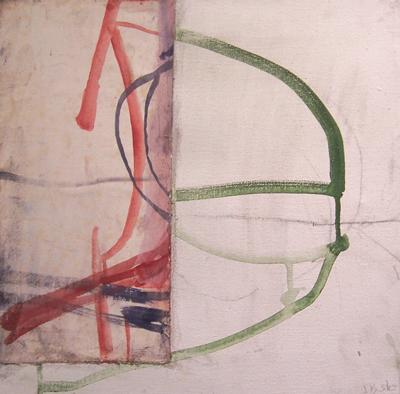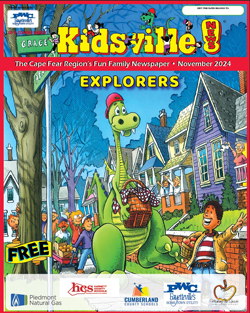As the Arts Council of Fayetteville-Cumberland County closes the exhibit Recycle! It’s Natural, the exhibit in the small west gallery will remain open until Oct. 23. Accumulation: A Collage Invitational is a small, but powerful exhibit that dominates the space in presence, professionalism and originality.
Seven artists were selected to show two works each in an effort to partner professionals with the open competition for the exhibit in the main gallery. The result was an exhibit that reveals the power and variety of styles within the collage technique.
Collage, the attaching of individual parts to an existing surface to create composition and meaning, was explored by Pablo Picasso and Georges Braque in the early 20th century. The technique has continued to strongly influence image making by artists from Pop art to the present. Accumulation is an exhibit that readily reveals the variety of styles professional artists use to incorporate collage into their works.
Included in the exhibit are quotations from each artist verbally communicating how collage is being used in the work — quotations will evoke the “ah ha!” moment for visitors to the gallery. Each quotation has the potential of bringing new meaning to the already existing multiple meanings of each work.
James Biederman, a Brooklyn, N.Y.-based abstract painter, joined the University of North Carolina at Pembroke’s art faculty in 2007, and was named the Martha Beach Distinguished Professor of Art at UNC Pembroke. Most recently he was awarded the 2008 Joan Mitchell Foundation Sculptors and Painters Grant. (The foundation issues $25,000 grants to 25 artists annually.)
Biederman is exhibiting two small abstract works titled “Amorous” and “A Year from Monday, John Cage.” Both works are no larger than 14” x 14” and appear twice their size in presence on the gallery wall. He combines the mark making of two painted surfaces joined to create what Biederman refers to as “unfi xing the fixed.”
With the masterful strokes of simplicity and limited color, Biederman refers to his paintings as “fragments of thought and moments realigned and seemingly fi xed; something not whole but complete; disjointed time, vision and space.” Upon seeing the paintings, the words will make perfect sense to viewers. His juxtaposition of surfaces and even using a stapler to create marks all appear effortlessly masterful. In Biederman’s works, what is absent is equally important to what is present.
Two other artists are representing UNC-P in the exhibit — Carla Rokes and Janette Hopper. The works of Rokes, a graphic designer, are in strong contrast to the more spacious work by Hopper.
The impressions Hopper transfers in the printmaking process are complemented by the Sumi painted marks incorporated into her images — quiet, refl ective and poetic moments are evoked in the two works titled “Low Country” and “Duality.” In our present age of information, Hopper combines an array of information to bring us back to a place of quietude. The artist states, “Direct drawing using Sumi ink, the collage and simplistic printing processes mimic the contemplative wealth provided to us by nature. Meditative is the word that comes to mind to describe this process and the resulting works.”
Rokes’ images are a combination of computer graphic images to create an interpretation of the female fi gure in space. The fi gure is active in movement; the sensuous texture is enclosed, locked within a sparse and minimal background. “Losing Equilibrium” and “Gush” are both works which, according to Rokes “explore feminine identities with the assemblage of disparate visual elements; the image is re-contextualized to create a new whole.”
The collage images of Fayetteville Technical Community College art instructor Chuck Lawson echo Rokes’s comment, “assemblage of disparate visual elements.” Lawson takes the disparate combination to make a more traditional collage of torn paper parts combined. Yet the content of Lawson’s work is anything but traditional. His work refl ects a solemn message about what he calls the “disjointed psyche of modern humans.”
Lawson’s works titled “Been Workin’ Out” and “Tips for Gorgeous” scream about a condition of American culture: Desire is a foil for the sinister and glamour is a foil for the ridiculous. The messages in Lawson’s works directly challenge states of being in our culture.
Peggy Hinson and Silvana Foti represent two of the art faculty at Methodist University. Both Hinson and Foti are long standing professional artists in the community who have exhibited extensively.
Hinson’s collage images are a mix of architectural places, dry humor and often individuals we can recognize in art history books. Both works, “Romie at the Met” and “Happening at the Met,” are humorous spins on individuals interacting in a staged setting, the collage becomes a place of discovery as the viewer slowly identifi es individuals they recognize among the crowded narrative.
Years ago, Hinson decided to take the collage approach after completing a major shadow-box construction based on the life and art of Romare Bearden. After that experience she noted, “I decided to integrate collage into my work. I expanded my subjects and discovered that I could tell stories, make commentaries, and use humor with combined imagery from old master artists.”
Foti is exhibiting two works which refl ect a more well-known style and her most recent approach after a sabbatical from teaching. Individuals who have followed her career will be able to compare “Underwater Maze” and “Underwater Tapestry.” The use of metal in combination with color and pattern has moved from a geometric-design composition to having a highly organic quality.
Foti explains her work concisely, “Parts are combined to create a new space — each part, a microcosm in itself, is a component of a larger universe. Parts, as a collective, create rhythm within the work; as well as the energy of space.”
well as the energy of space.”
Dwight Smith is the artist/assistant professor representing Fayetteville State University in the exhibit. Smith is known in the area as an abstract artist who integrates iconic symbols into his collages. Color and texture have always been an integral part of Smith’s technique for creating space and rhythm — movement across the picture plane or “push/pull” in space.
As with all the art in the exhibit, as well as being an integral part of contemporary sensibilities, multiple meanings are always present in Smith’s work. His comment on the two works in the exhibit is as follows, “Collage is a method of integrating opposites into a state of harmony and balance. Iconic symbols, abstract shapes, patterns and textures merge as a sum that is greater than its parts.”
The exhibit is small, only 14 works of art by seven artists, but it is a wonderfully diverse and potent exhibition of professional originality and high standards. For information about this exhibit and upcoming exhibitions, call the Art Council at 323-1776 or visit the website at www.theartscouncil.com.
Photo: “A Year From Monday, John Cage,” by James Biderman is one of 14 works on display in Ac-cumulation: A Collage Invitational at the Arts Council.

 How to resolve AdBlock issue?
How to resolve AdBlock issue? 








